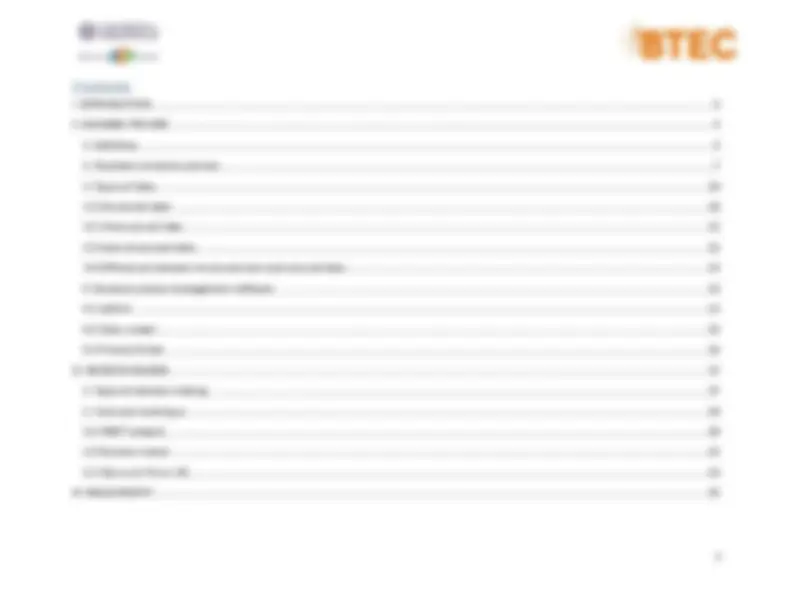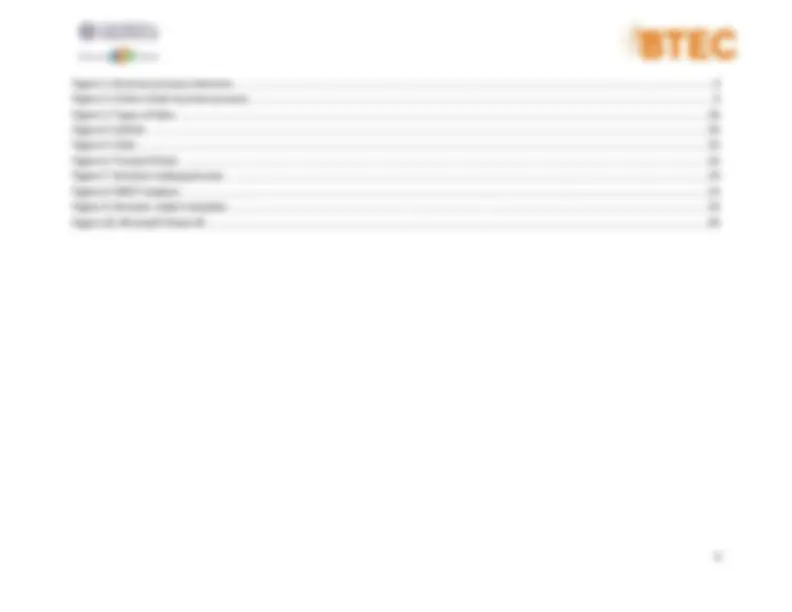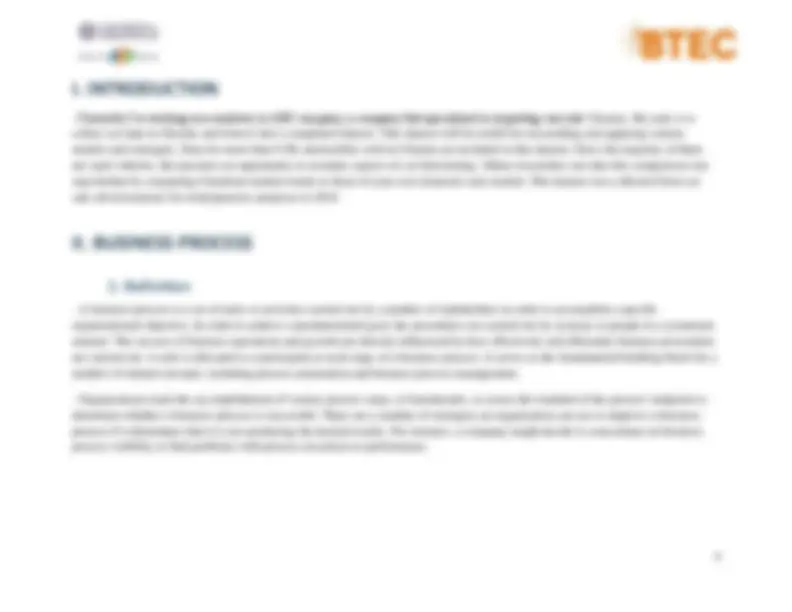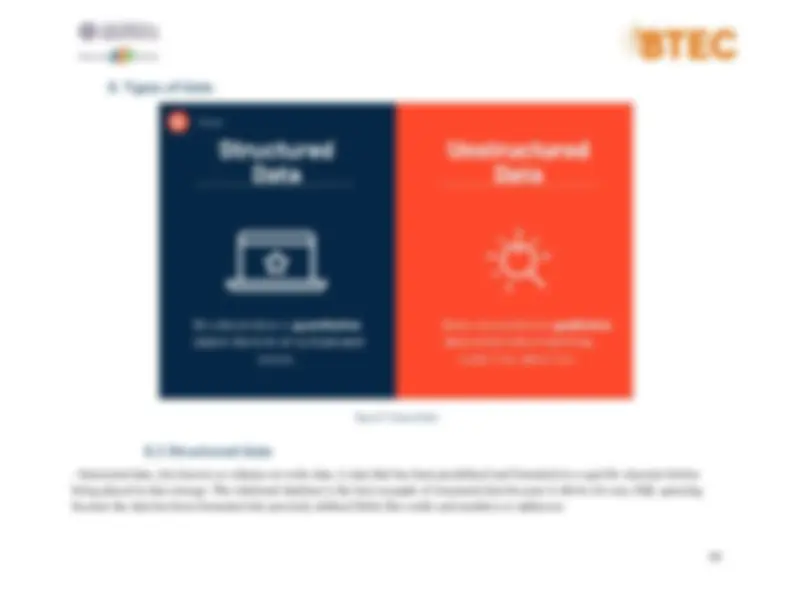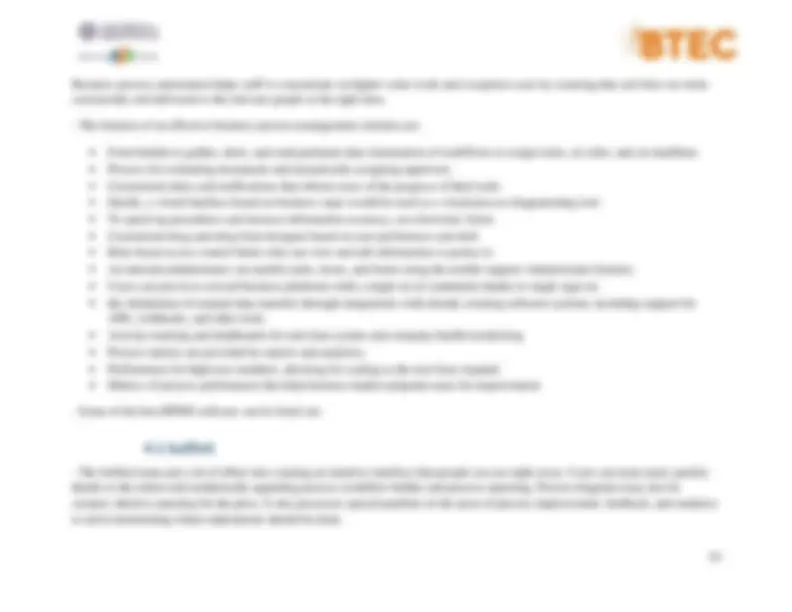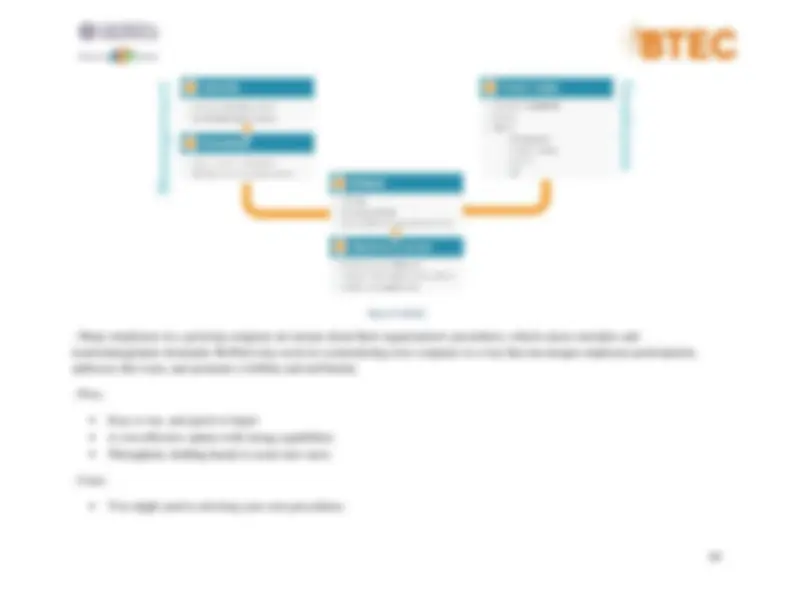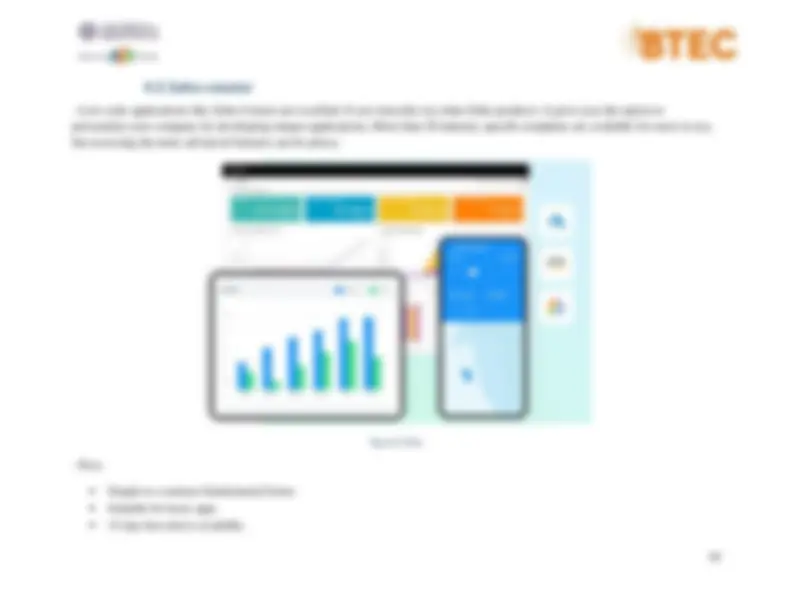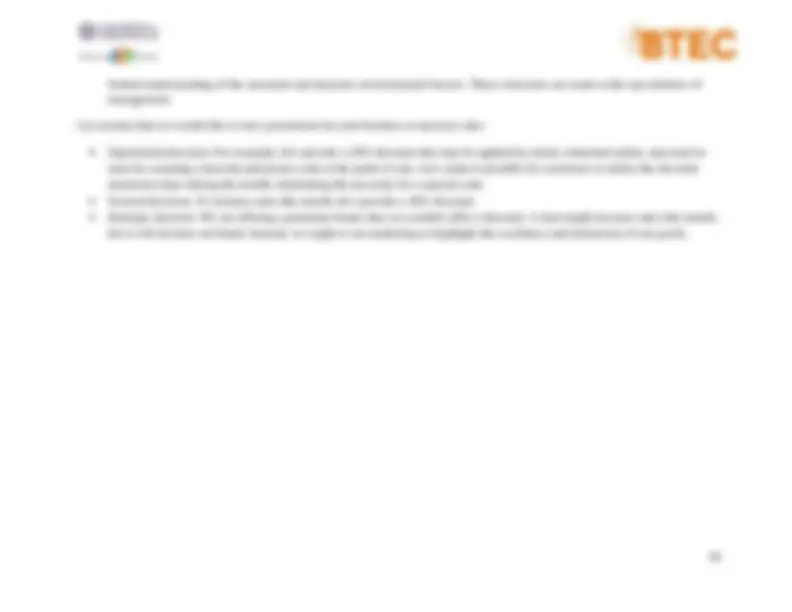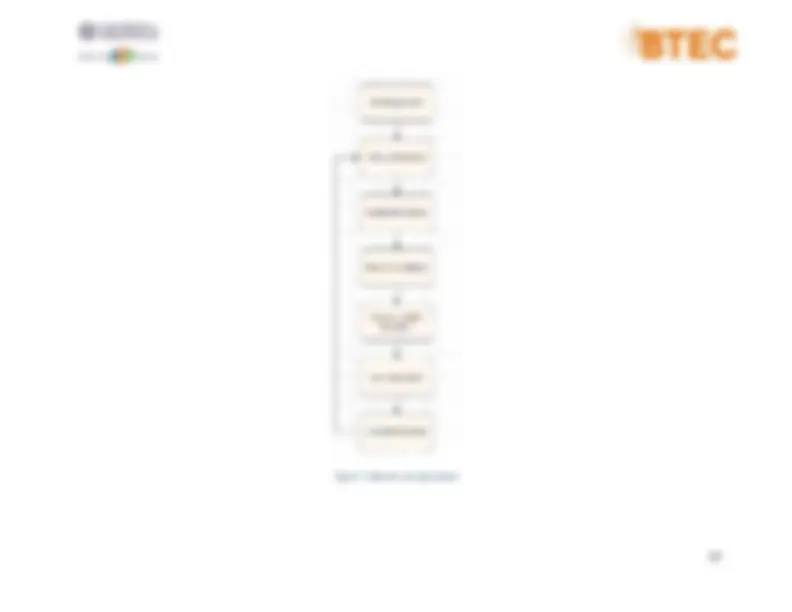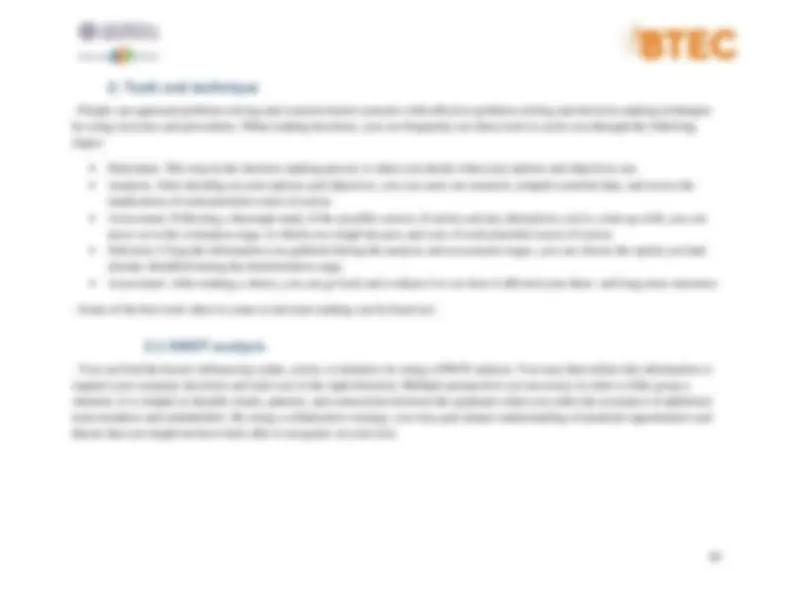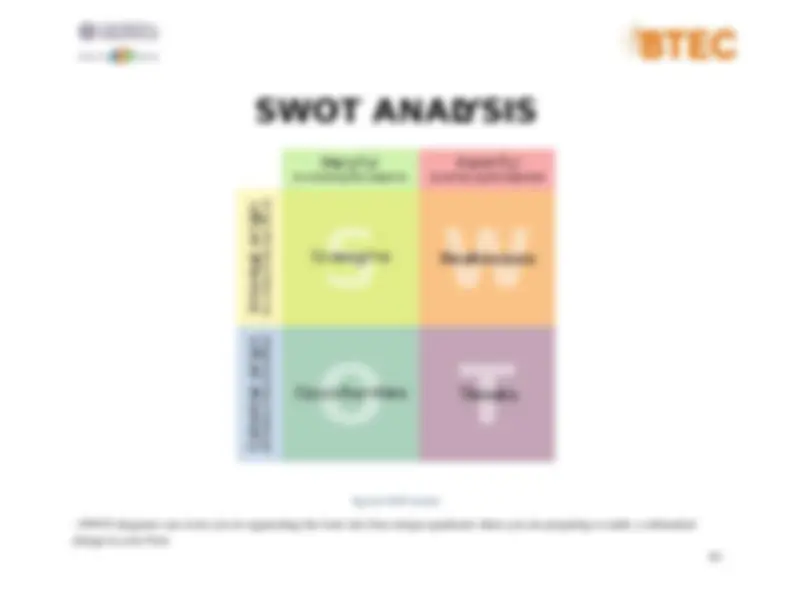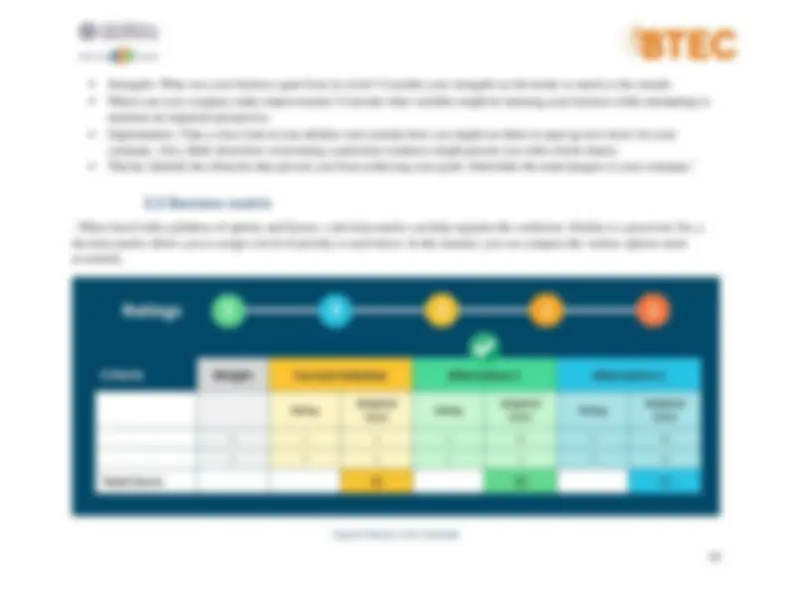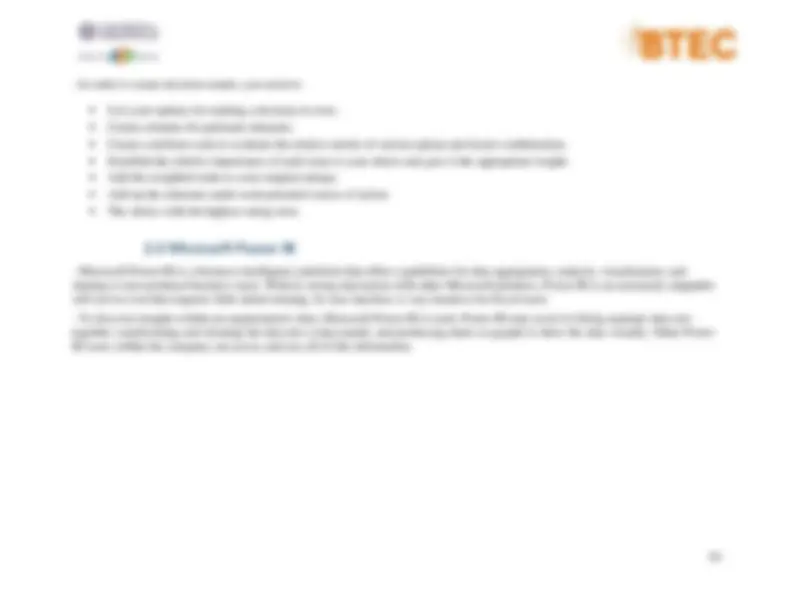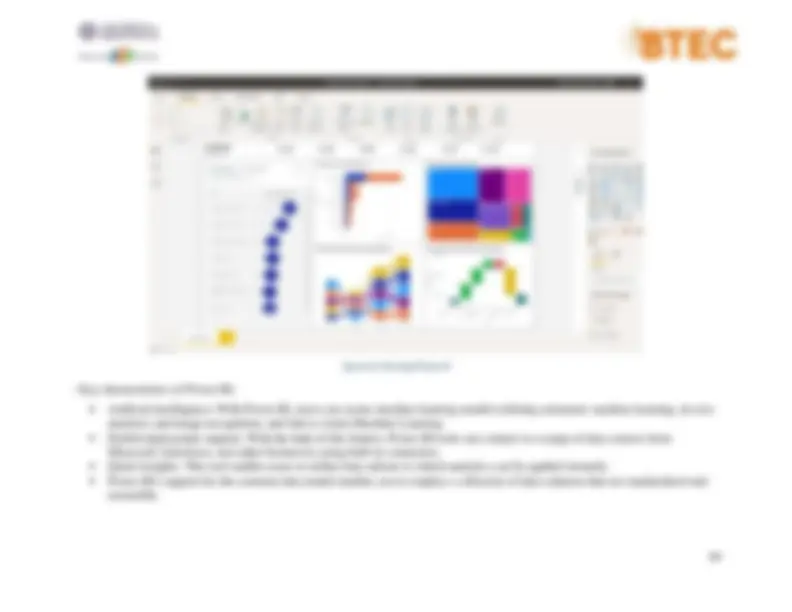Download 1641_Business Intelligence_Assignment 1 and more Assignments Business Administration in PDF only on Docsity!
ASSIGNMENT 1 FRONT SHEET
Qualification BTEC Level 5 HND Diploma in Computing Unit number and title Unit 14: Business Intelligence Submission date Date Received 1st submission Re-submission Date Date Received 2nd submission Student Name Mai Tran Tuan Anh Student ID GCD Class GCD0904 Assessor name Phyo Min Tun Student declaration I certify that the assignment submission is entirely my own work and I fully understand the consequences of plagiarism. I understand that making a false declaration is a form of malpractice. Student’s signature Grading grid P1 P2 M1 M2 D1 D
Summative Feedback: Resubmission Feedback:
Grade: Assessor Signature: Date: IV Signature:
- I. INTRODUCTION
- II. BUSINESS PROCESS
- Definition
- Illustrate a business process
- Types of data
- 3.1 Structured data
- 3.2 Unstructured data
- 3.3 Semi-structured data
- 3.4 Differences between structured and unstructured data
- 4 Business process management software.............................................................................................................................................................
- 4.1 beSlick
- 4.2 Zoho creator.......................................................................................................................................................................................................
- 4.3 Process Street
- III. DECISION MAKING
- Types of decision making
- Tools and technique
- 2.1 SWOT analysis
- 2.2 Decision matrix
- 2.3 Microsoft Power BI............................................................................................................................................................................................
- IV. BIBLIOGRAPHY
- Figure 1: Business process elements
- Figure 2: Online ticket business process
- Figure 3: Types of data
- Figure 4: beSlick
- Figure 5: Zoho
- Figure 6: Process Street
- Figure 7: Decision making process
- Figure 8: SWOT analysis
- Figure 9: Decision matrix template
- Figure 10: Microsoft Power BI
I. INTRODUCTION
- Currently I’m working as a marketer in ABC company, a company that specialized in importing cars into Ukraine. My task is to collect car data in Ukraine and form it into a completed dataset. This dataset will be useful for researching and applying various models and strategies. Data for more than 9.5K automobiles sold in Ukraine are included in this dataset. Since the majority of them are used vehicles, this presents an opportunity to examine aspects of car functioning. Others researcher can take this comparison one step further by comparing Ukrainian market trends to those of your own domestic auto market. This dataset was collected from car sale advertisements for study/practice purposes in 2016
II. BUSINESS PROCESS
1. Definition
- A business process is a set of tasks or activities carried out by a number of stakeholders in order to accomplish a specific organizational objective. In order to achieve a predetermined goal, the procedures are carried out by systems or people in a systematic manner. The success of business operations and growth are directly influenced by how effectively and efficiently business procedures are carried out. A task is allocated to a participant at each stage of a business process. It serves as the fundamental building block for a number of related concepts, including process automation and business process management.
- Organizations track the accomplishment of various process steps, or benchmarks, or assess the standard of the process' endpoint to determine whether a business process is successful. There are a number of strategies an organization can use to improve a business process if it determines that it is not producing the desired results. For instance, a company might decide to concentrate on business process visibility to find problems with process execution or performance.
effortlessly. They are goal-oriented. They monitor internal and external business operations, examine opportunities and challenges, and ensure that all processes are continually improved.
- There are 7 steps in a business process:
- Define your goals: What aims does the procedure pursue? Why did it get made? How will you determine whether it is a success?
- Plan and map your process: What are the tactics required to accomplish the objectives? This is the process' broad road map.
- Set actions and assign stakeholders: Determine the particular tasks that your teams and equipment must complete to carry out the plan.
- Test the process: To evaluate the procedure' effectiveness, run it on a modest scale. Any gaps should be noted and corrected.
- Implement the process: Start the procedure running in a real setting. Train and communicate with all parties as necessary.
- Monitor the results: Review the procedure and look for trends. Keep track of the process history.
- Repeat: Replicate the procedure for subsequent processes if it is successful in achieving the objectives put forth for it. 2. Illustrate a business process
- With the development of information technology, the way how our society works has been very different from the past. With advanced technology applied into daily life, it has made our life become a lot easier. Everything can be done online now, from buying grocery, digital devices, booking ticket and so on. I have drawn an activity diagram of an airline online reservation system, which will take us to a closer look on how this business process works.
Figure 2 : Online ticket business process
3. Types of data Figure 3 : Types of data 3.1 Structured data
- Structured data, also known as schema-on-write data, is data that has been predefined and formatted to a specific structure before being placed in data storage. The relational database is the best example of structured data because it allows for easy SQL querying because the data has been formatted into precisely defined fields like credit card numbers or addresses.
- Structured data is a trusted companion. It serves as the foundation for ATMs and inventory control systems. It may be created manually or automatically. Weblog statistics and point-of-sale information like barcodes and quantity are typical examples of machine-generated structured data. Additionally, spreadsheets are a well-known example of human-generated structured data and are familiar to anyone who works with data. 3.2 Unstructured data
- Unstructured data, which is frequently classified as qualitative data, cannot be processed and evaluated using standard data tools and techniques. Unstructured data is best maintained in non-relational (NoSQL) databases since it lacks a specified data model. Using data lakes to store unstructured data in its raw form is another method for managing it. Unstructured data is becoming increasingly significant. According to recent projections, unstructured data makes up over 80% of all enterprise data, and 95% of businesses give unstructured data management a high priority.
- Unstructured data is more distinctive and categorical in nature because it is qualitative rather than quantitative. Through social media and review websites, it is highly suited for evaluating the efficacy of marketing campaigns or spotting potential buying trends. As it may be used to spot patterns in chats or questionable email trends, it can also be highly helpful to the organization in monitoring for policy compliance. 3.3 Semi-structured data
- What would typically be referred to as unstructured data but additionally contains information that specifies specific qualities is referred to as semi-structured data. When compared to strictly unstructured data, the metadata makes it possible to catalog, search, and analyze the data more effectively. Semi-structured data can be thought of as the intermediary between structured and unstructured data.
- Semi-structured data includes things like emails, XML, and JSON. Relational databases, which use edges, labels, and tree structures to describe data, are incompatible with semi-structured data. These are represented using trees and graphs, which also include labels and attributes. These are unstructured data. Graph-based data structures can be used to store semi-structured data. A NoSQL database with JSON capability is called MongoDB (semi-structured data). Data that is composed of tags and is self-descriptive is referred to as semi-structured data. Structured and unstructured data are not the same thing. The Data Object Model, Objects Exchange Model, and
Business process automation helps staff to concentrate on higher value work and exception cases by ensuring that activities are done consistently and delivered to the relevant people at the right time.
- The features of an effective business process management solution are:
- Form builder to gather, show, and send pertinent data Automation of workflows to assign tasks, set rules, and set deadlines
- Process for evaluating documents and dynamically assigning approvers
- Customized alerts and notifications that inform users of the progress of their tasks
- Ideally, a visual interface based on business steps would be used as a visual process diagramming tool.
- To speed up procedures and increase information accuracy, use electronic forms
- Customized drag-and-drop form designer based on user preferences and skill
- Role-based access control limits who can view and edit information to protect it.
- An internal administrator can modify tasks, items, and forms using the mobile support Administrator features.
- Users can join in to several business platforms with a single set of credentials thanks to single sign-on.
- the elimination of manual data transfers through integrations with already-existing software systems, including support for APIs, webhooks, and other tools.
- Activity tracking and dashboards for real-time system and company health monitoring
- Process metrics are provided by reports and analytics.
- Performance for high user numbers, allowing for scaling as the user base expands
- Metrics of process performance that help business leaders pinpoint areas for improvement
- Some of the best BPMS software can be listed are: 4.1 beSlick
- The beSlick team put a lot of effort into creating an intuitive interface that people can use right away. Users can learn more quickly thanks to the robust and aesthetically appealing process workflow builder and process reporting. Process diagrams may also be created, which is amazing for the price. It also possesses special qualities in the areas of process improvement, feedback, and analytics to aid in determining where adjustments should be done.
Figure 4 : beSlick
- Many employees in a growing company are unsure about their organization's procedures, which causes mistakes and team/management mismatch. BeSlick may assist in systematizing your company in a way that encourages employee participation, addresses this issue, and promotes visibility and uniformity.
- Pros:
- Easy to use, and quick to begin
- A cost-effective option with strong capabilities
- Throughout, holding hands to assist new users
- Cons:
- You might need to develop your own procedures.
- Cons:
- Integration issues when using non-Zoho goods
- Reporting may be constrained.
- Tutorials and support could use some work.
- More for the creation of simple apps than for business process management. 4.3 Process Street
- For smaller firms, Process Street is a good process management option. Using a drag and drop interface, you can easily construct automated workflows, recurring tasks, and checklists. Although it can be used to create more complex workflows, it can be challenging to visualize them for first-time users, who may find it challenging to understand the interface. Figure 6 : Process Street
- Pros:
- Powerful form-building skills that may be dependent on process flow
- Vast array of templates
- Cons:
- No method Diagram view
- The quality of pre-built templates can vary.
- Many useful features are more expensive
- Reports don't always present detail properly.
III. DECISION MAKING
1. Types of decision making
- Overall, there are 3 different types of decision making:
- Operational: These choices affect how the business is run on a daily basis. As they are often taken, they have a short-term horizon. These choices are based on the events' facts, therefore little business judgment is needed. Lower tiers of management are where operational decisions are made. Information systems must concentrate on the managerial decision-making process because information is required to assist the manager in making informed, logical decisions.
- Tactical: These decisions relate to the implementation of strategic decisions. They are directed towards developing divi-sional plans, structuring workflows, establishing distribution chan-nels, acquisition of resources such as men, materials and money. These decisions are taken at the middle level of management.
- Strategic: Strategic choices of action have a significant impact on the entire or a significant portion of a company enterprise. They immediately assist in achieving the enterprise's shared objectives. They affect the company enterprise over the long haul. They might entail significant changes from past techniques and procedures. Strategic decisions are typically unstructured, so a manager must use his or her business judgment, assessment, and intuition to define the issue. These choices are based on a
Figure 7 : Decision making process
2. Tools and technique
- People can approach problem-solving and scenario-based scenarios with effective problem-solving and decision-making techniques by using exercises and procedures. When making decisions, you can frequently use these tools to assist you through the following stages:
- Determine: This step in the decision-making process is when you decide what your options and objectives are.
- Analysis: After deciding on your options and objectives, you can carry out research, compile essential data, and assess the implications of each potential course of action.
- Assessment: Following a thorough study of the possible courses of action and any alternatives you've come up with, you can move on to the evaluation stage, in which you weigh the pros and cons of each potential course of action.
- Selection: Using the information you gathered during the analysis and assessment stages, you can choose the option you had already identified during the determination stage.
- Assessment: After making a choice, you can go back and evaluate it to see how it affected your short- and long-term outcomes.
- Some of the best tools when it comes to decision making can be listed are: 2.1 SWOT analysis
- You can find the factors influencing a plan, action, or initiative by using a SWOT analysis. You may then utilize this information to support your company decisions and steer you in the right direction. Multiple perspectives are necessary in order to fully grasp a situation. It is simpler to identify trends, patterns, and connections between the quadrants when you enlist the assistance of additional team members and stakeholders. By using a collaborative strategy, you may gain deeper understanding of potential opportunities and threats that you might not have been able to recognize on your own.

